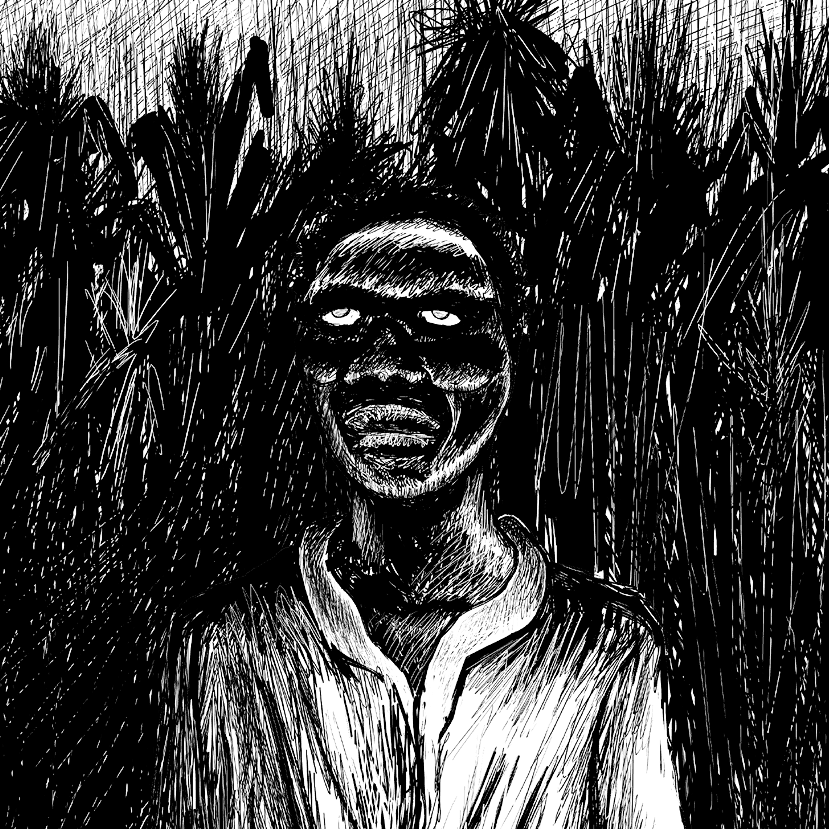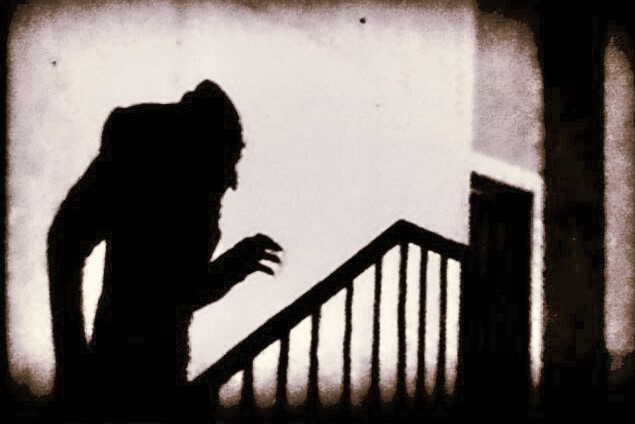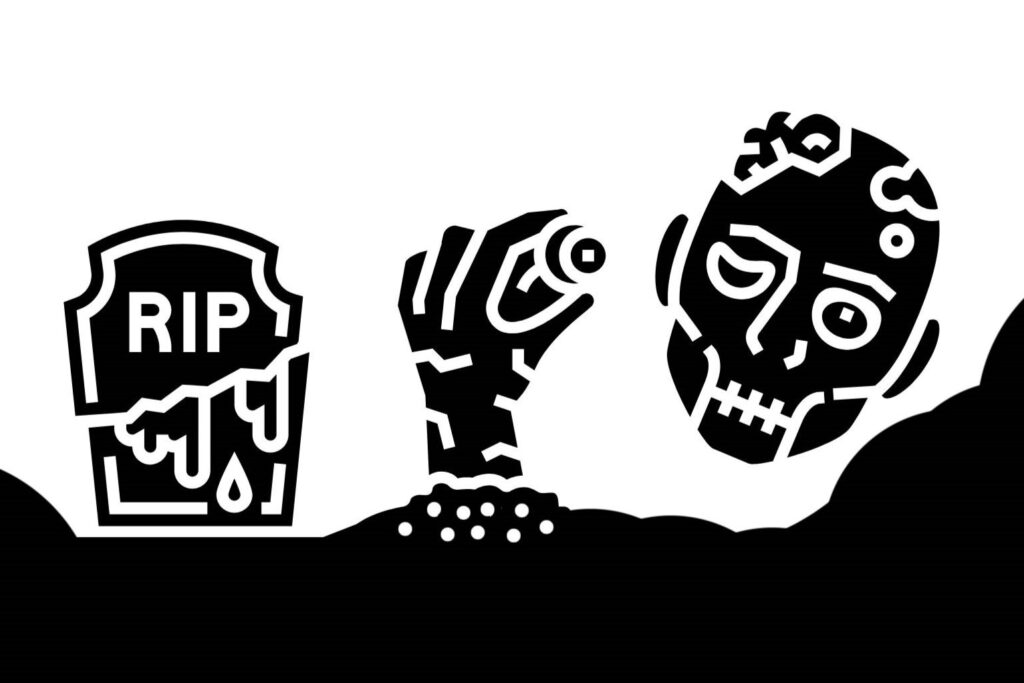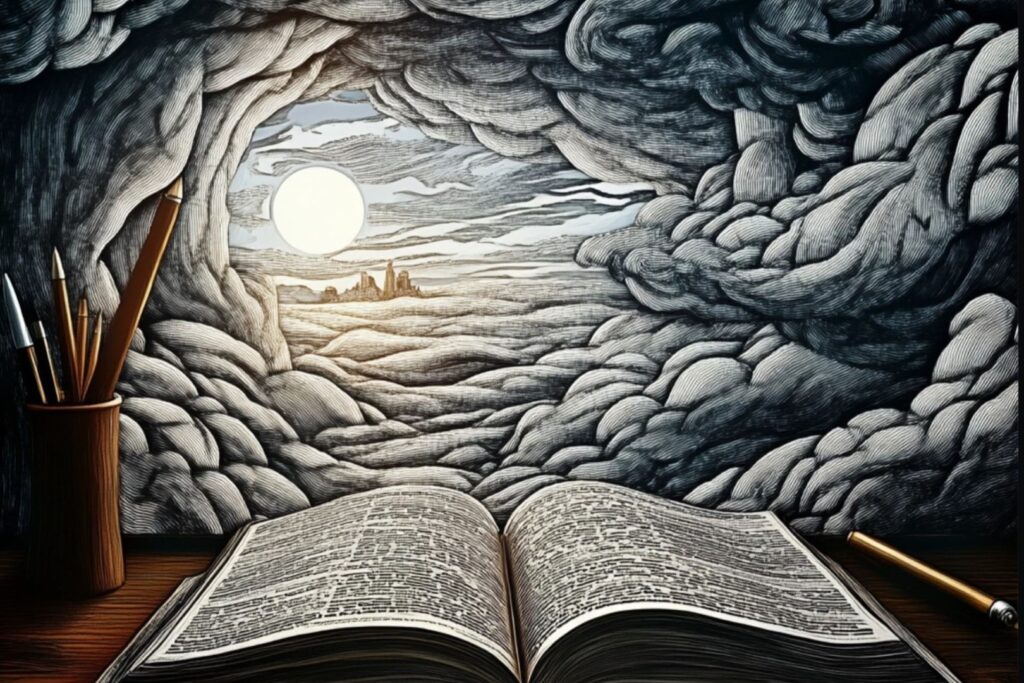This article traces the evolution of the zombie myth from its Haitian origins to its global popularity, exploring the intriguing connections between zombies and vampires and how these creatures embody the anxieties of different eras and cultures.
While in Western culture zombies embody an uncontrollable contagion and viral death, the Haitian zombie is rather a figure of ultimate punishment, reserved for the “bad living” and considered worse than death itself.
In Haitian society, death is an omnipresent reality rather than something to fear; life is largely seen as preparation for death. Here, the zombie doesn’t symbolize resurrection but the control over death itself.
Zombification in Haitian Culture: A Fate Worse Than Death

In Haitian culture, becoming a zombie represents a fate more horrifying than physical death—social death. The concept of social death finds resonance with marginalized individuals, such as the homeless or immigrants. There are three categories of zombies in Haiti:
The psychiatric zombie: This type includes individuals suffering from mental disorders. These individuals are considered to have visited the realm of the dead and may adopt mystical behaviors. Their condition is often linked to illnesses such as schizophrenia.
The social zombie: In times of natural disaster, which frequently strike Haiti, people presumed dead are occasionally replaced by others with fabricated identities. The family members pretend to recognize the “returned” person, a ritual that helps cope with grief.
The toxic zombie: The ultimate punishment for individuals found guilty of serious harm to the society by a secret tribunal, who are then “zombified” through a neurotoxin administered by a bokor (voodoo sorcerer). Buried alive, they are later revived and kept in a hypnotic state with the help of barbiturates, reduced to submission and forced labor.
This practice, used when traditional justice is considered too slow or ineffective, mirrors the history of slavery of Haiti, the first Black nation to gain independence from in 1804. The zombie embodies the profound horror of enslavement, as the reanimated person, devoid of autonomy and controlled by the bokor, symbolizes a fate worse than death: the total loss of free will.
The Science Behind Zombification
The potential scientific explanation for the toxic zombie phenomenon involves the use of tetrodotoxin (TTX), a powerful neurotoxin extracted from the liver of the puffer fish (called “froufrou” in Haiti and “fugu” in Japan). TTX induces a state of extreme paralysis that mimics death, as the victim loses sensory perception and motor control but may retain a degree of consciousness. The toxin binds to sodium channels on nerve cells, drastically slowing down metabolic functions: the heartbeat slows, breathing becomes shallow, and muscles are paralyzed, though awareness remains intact. Because TTX does not penetrate human skin, it is often combined with frog saliva or viper venom, which causes local inflammation and itching, prompting the victim to scratch and inadvertently introduce the toxin into their bloodstream.
The Spread of Zombies in America
The concept of the zombie began to enter Hollywood’s imagination during the American occupation of Haiti (1915-1934), when American anthropologists took interest in Haitian culture. Victor Halperin’s film White Zombie released in 1932 stays close to the original concept by featuring a bokor who reanimates bodies to serve as enslaved field workers under the control of sorcerers. This period also coincides with a fascination with voodoo, which shares certain beliefs with those present in the United States, particularly in New Orleans.
William Seabrook’s 1929 book The Magic Island describes Haitian zombies as the living dead, inspiring George Romero’s 1968 film Night of the Living Dead, which marked a decisive turning point in the evolution of the myth. While the first zombies were presented as victims, Romero transforms them into cannibalistic, virus-like creatures.
The Modern Zombie Apocalypse
Starting in the 1980s, zombies were reimagined within a global apocalypse context, symbolizing the planetary upheavals of the late 20th century, such as globalization, mass consumption, pandemics, climate crises, economic collapses, and the fragility of social order. This shift resonates in a world increasingly aware of epidemics and the rapid spread of contagion. Themes like survival, existential crises, fear of infection, and the loss of control and individuality have since become central to the apocalyptic zombie narrative.
Zombies vs. Vampires: Reflections of cultural anxieties


In North America, the zombie embodies fears of viral epidemics spread through bites, serving as a tropical equivalent to the Western vampire mythology. Like vampires, zombies are dehumanized creatures transformed by infection, endlessly lingering between life and death. Modern vampires appeared in the 19th century with the rise of fears associated with disease and the collapse of traditional moral values. This myth also draws on xenophobia, often portraying the vampire as an exotic outsider from obscure places, like Eastern Europe. Whereas the vampire represents the elite, the zombie is a figure of the masses: anyone can become one, and they attack in hordes, overwhelming survivors. Vampires, meanwhile, have remained relatively unchanged—solitary, intelligent, and powerful, symbolizing aristocracy or elitism.
Comparison of myths
Contagion vs. Elitism : Zombies present a universal threat—anyone can turn into one. Vampires, in contrast, embody an exclusive transformation, typically through a selective “gift.”
Horde vs. Individual : Zombies attack in groups, symbolizing the fear of the mob. Vampires act alone or in small groups, representing fear of the individualized Other.
Loss of Self vs. Transformation : Zombies lose all individuality and awareness, while vampires retain their identity, albeit with a corrupt moral twist.
Conclusion
In conclusion, the evolution of the zombie myth illustrates how social anxieties shift in response to changing cultural and historical contexts. From its origins in Haiti—where the zombie represents ultimate social punishment and strict control, rooted in a legacy of slavery and voodoo practices—the figure has transformed into a global symbol of modern fears, encompassing everything from viral contagion to the loss of individualism in mass society.
Though in distinct ways, zombies and vampires both mirror societal anxieties about the transformation of individuals through infection. The zombie represents mass contagion and the erosion of autonomy, while the vampire conveys an elitist, individualized threat linked to moral corruption. As society changes, these myths will undoubtedly continue to evolve, offering a reflection on our humanity and social fabric.
This article is based on the anthropologist Philippe Charlier and his book Zombis, investigation into the living dead (2025), which he wrote in his second office, the cemeteries of Port-au-Prince and Artibonite, where zombies survive.

